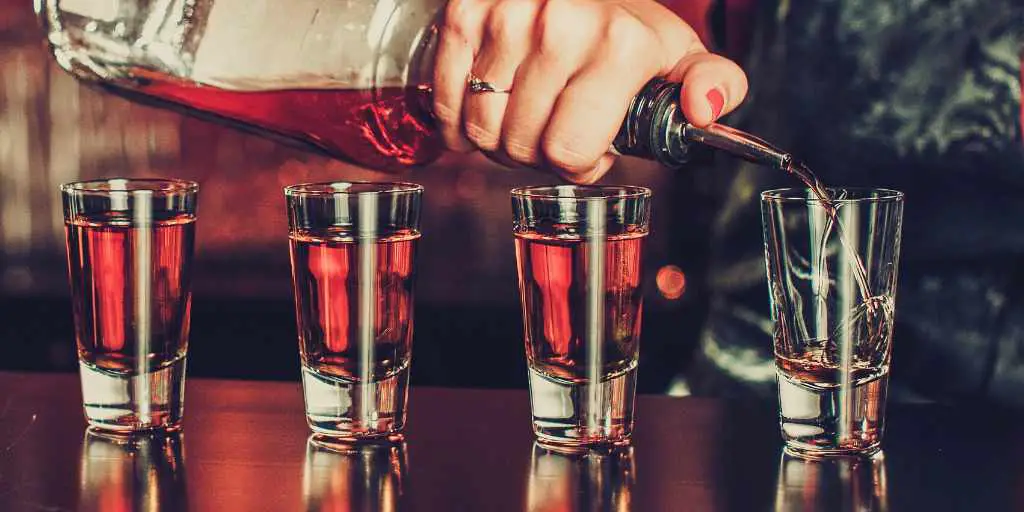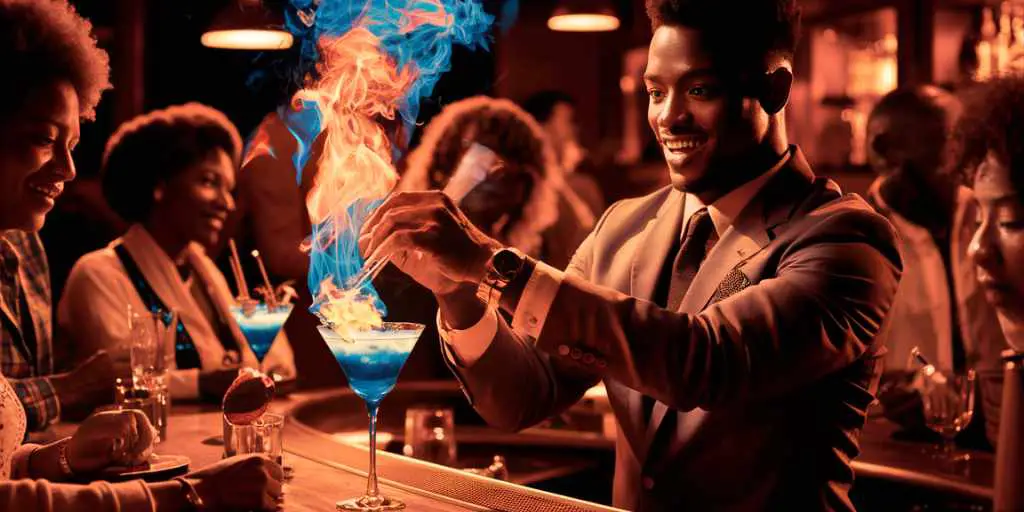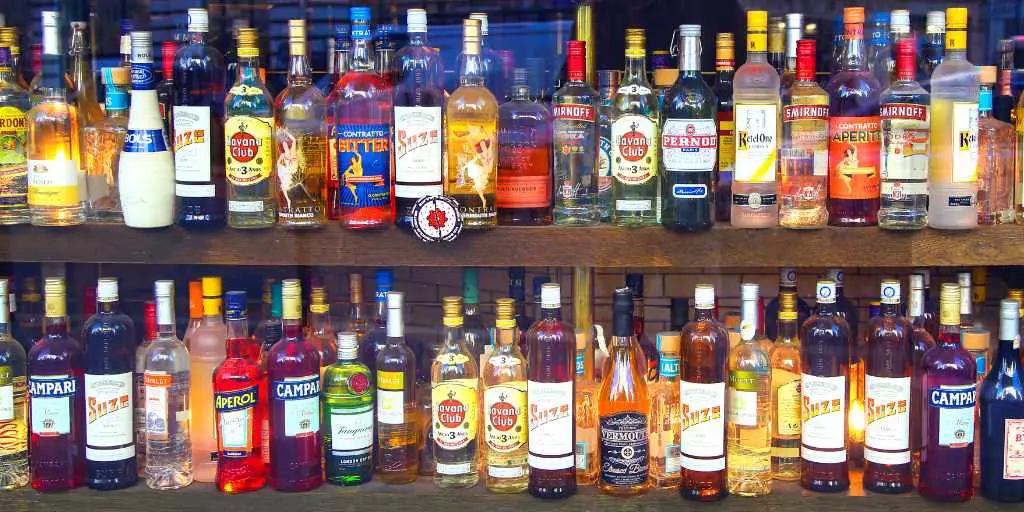Aprons have a long-standing history in the bartending industry, serving as a functional garment and a stylish accessory for busy bartenders. Traditionally, bartenders wore leather aprons to protect their clothing from spills while preparing and serving drinks to patrons. Over time, the bartender’s apron has evolved into a symbol of professionalism and skill, showcasing the bartender’s identity.
Today, using aprons in the bartending world carries more significance than just its appearance. The functional benefits of wearing an apron, such as increased utility from pockets for tools and added protection against accidents, make them essential for new and experienced bartenders. Additionally, they cater to health and safety considerations, ensuring bartenders maintain a clean and hygienic work environment.
Key Takeaways
- The bartender apron serves as a functional garment, protecting clothing from spills and providing pockets for tools.
- Wearing aprons contributes to maintaining a clean and hygienic work environment for bartenders.
- Aprons symbolize professionalism and skill, enhancing the overall appearance and identity of bartenders.
Historical Significance
Origins of Apron Usage in Bartending
The apron has been a staple of the bartending profession since its inception. Its primary purpose was to protect the bartender’s clothing from spills and stains while mixing drinks. However, the apron has evolved and has taken on a more symbolic role. It is now often seen as a sign of professionalism and skill. In the early days of bartending, sleeve garters or armbands were also common for bartenders to wear, as they helped keep shirt sleeves clean and out of the way while working. This part of the attire could be seen in the tradition of bartenders wearing armbands.
Cultural Evolution of Bartender Attire
From traditional to modern times, bartender attire has undergone a significant transformation. In the past, most bartenders dressed formally, complete with vests, ties, and polished shoes. The introduction of cocktails during Prohibition influenced the image of the bartender, making them a symbol of sophistication and class.
As society moved towards a more casual style, bartender attire also shifted. Today, we see a mix of classic and modern approaches to bartending fashion. Some establishments maintain a formal dress code, while others opt for a laid-back, relaxed atmosphere, with most bartenders in jeans and t-shirts. One item that has persisted throughout these changes is the bartending apron, which serves a functional purpose and has become a significant part of the bartender’s identity.
What To Look For In A Bartending Apron
Choosing the right apron for bartending involves considering factors such as:
- Material: The apron should be made from durable, easy-to-clean materials such as canvas or denim.
- Pockets: Opt for an apron with multiple pockets to store tools and accessories, such as a wine key, bottle opener, or pen.
- Strap Design: The apron should have adjustable straps for a comfortable fit, ensuring it stays in place while working.
- Style: Bartending aprons come in various styles, from classic-server designs to modern denim aprons, allowing for personal expression and blending with the establishment’s atmosphere.
In conclusion, the history of bartender aprons and attire sees a blend of functionality and symbolism. Throughout the years, the bartender’s appearance has evolved to reflect societal changes and the growth of cocktail culture. The bartender apron remains a vital component for practical purposes and as a symbol of knowledge and expertise behind the bar.
Functional Benefits
Protection From Spills and Stains
Bartenders often work with various liquids, such as alcohol, soda, and juice, making them prone to spills and stains. Wearing an apron provides a barrier that helps protect their clothes from getting dirty and damaged. This is especially important in a busy bar environment, where looking clean and presentable is essential for maintaining a professional appearance.
Aprons come in various materials that offer different levels of protection:
- Cotton canvas: lightweight and durable
- Leather: offers maximum protection from spills
Aprons made from these materials are designed to be extremely durable and both practical incredibly comfortable and stylish, ensuring that bartenders can work efficiently while looking their best.
Accessibility of Bar Tools and Accessories
Many modern bartender aprons come with thoughtful design features such as pockets and loops, providing bartenders with easy access to essential tools and accessories. These pockets help keep bar tools and accessories organized and readily available, allowing bartenders to work more efficiently and quickly.
Here are some common tools and accessories that can be stored in apron pockets:
- Bottle openers
- Pens
- Wine keys
- Cocktail strainers
Having these items within reach helps bartenders serve customers faster and more effectively.
Professional Appearance and Uniformity
In addition to protecting from spills and easy access to tools, bartender aprons protect clothing and contribute to a polished and uniform professional appearance. Aprons have unique features that help create a cohesive look and atmosphere in a bar setting and reflect a particular venue’s atmosphere and theme. For example:
- Vintage speakeasies might encourage bartenders to wear aprons with suspenders and braces to match the period aesthetic.
- Tiki bars might allow for more relaxed and colourful apron designs to complement the lively atmosphere.
The apron’s style and colour can communicate a sense of professionalism and teamwork while reinforcing a bar’s overall look and ambience.
Health and Safety Considerations
Hygiene and Cleanliness
Aprons are essential for bartenders to maintain a high level of personal hygiene and cleanliness. They are a barrier between the bartender’s clothes and the substances they handle, such as spirits, liqueurs, syrups, soft drinks, and food ingredients. Wearing an apron helps to prevent cross-contamination and protect the clothes from stains and spills. It is imperative when bartenders work with potentially hazardous substances like raw meat or seafood.
Moreover, some aprons come with functional pockets, conveniently and organised, allowing bartenders to carry essential tools and utensils, like tongs, muddlers, and bottle openers. This keeps the workplace tidy and ensures that bartenders have easy access to equipment, reducing the chances of accidents and spills.
Compliance With Food Safety Regulations
In many countries, food safety regulations require staff members who handle food and beverages to wear proper protective clothing. Bartenders may be obliged to follow these rules to ensure they comply with local laws and maintain a hygienic work environment. Additionally, wearing aprons may be necessary to meet the standards set by health inspection authorities or the policies of the establishment they work for.
In summary, wearing aprons is a crucial aspect of health and safety for bartenders. They provide protection, maintain cleanliness, and help bartenders comply with food safety regulations, ultimately contributing to a safer and more enjoyable experience for employees and customers.
Material and Design Variations
Fabric Choices
When it comes to bartender aprons, there are several fabric choices available, each with its specific benefits. Some popular materials include:
- Canvas: Canvas is a durable, water-resistant fabric that works well for bartender aprons, providing good protection and longevity.
- Denim: This material offers a stylish, casual look while still giving your clothing adequate protection from spills and stains.
- Linen: A lightweight, breathable fabric, linen is a great option for bartenders working in warmer environments.
- Leather: Leather aprons provide high durability and protection while delivering a sophisticated, upscale appearance.
Apron Styles and Personalization
Bartender aprons come in various styles and designs, allowing them to fit many different styles, preferences and work environments. Some common apron styles include:
- Bib Aprons: Also known as full aprons, these cover the upper body and feature neck straps and waist ties. They typically include pockets for storage.
- Waist Aprons: Worn around the waist and extending down the thighs, waist aprons provide less coverage but maintain pockets for quick access to essential tools.
- Cobbler Aprons: A mix of bib and waist aprons cover both the front and back but keep the sides open for ease of movement.
Many apron manufacturers offer personalization options such as logos, embroidery, or custom colours to create a unique look and represent the bartender or establishment.
What should I look for when purchasing a leather apron?
When considering a leather apron, keep in mind the following aspects:
- Durability: Quality leather will withstand wear and tear, ensuring a long-lasting investment.
- Comfort: Opt for an apron with adjustable straps and a proper fit to ensure comfort throughout a shift.
- Maintenance: Leather may require special care, such as conditioning and cleaning, so be prepared for the upkeep.
- Cost: Genuine leather can be more expensive than other fabrics, but the quality and longevity may justify the price.
By selecting the right material, style, and design, bartenders can find the perfect match for an apron that suits their needs and showcases their unique flair.
Symbolism and Identity
Brand Representation
Bartender aprons serve practical purposes and play a significant role in representing a bar’s brand and image. Many establishments customize aprons with their logo or colour scheme, turning their staff into walking advertisements for the business. Additionally, a well-designed and stylish bartending apron, can create a sense of unity and professionalism among the team, enhancing the overall atmosphere of the bar.
A few examples of apron types and their associated brand identities are:
- Classic Waist Apron: Often used in traditional and upscale bars for a classic and elegant look.
- Full-Length Apron: Common in casual, high-volume establishments, providing extra coverage and a more laid-back appeal.
- Cross-Back Apron: Gaining popularity in trendy, modern bars for their unique design and comfortable wear.
Personal Expression Through Aprons
Bartenders also have the opportunity to express their personal style and creativity through their choice of custom aprons. Sometimes, bartenders may customize their aprons with features such as embroidered names, thematic patterns, or even personalized artwork.
Some ways bartenders can use aprons for personal expression include:
- Material Selection: Choosing unique fabrics, such as denim, leather, or canvas, to showcase individual styles.
- Pocket Design: Customizing pocket size, placement, or number to optimize storage and functionality.
- Accessories: Adding pins, patches, or other decorative elements creates a unique appearance.
In conclusion, bartender aprons carry both symbolic and practical importance in the industry. They act as brand representation for establishments and offer opportunities for personal expression among bartenders while providing the necessary protection and utility required in their line of work.
Frequently Asked Questions

What are the benefits of bartenders wearing aprons?
Bartenders wear aprons for various reasons, including protection against spills and stains, utility in carrying essential tools and contributing to a professional appearance. Aprons also provide convenience and efficiency for bartenders during their shifts source.
How do aprons protect bartenders during their shift?
Aprons shield bartenders’ clothing from spills, splashes, and other messes, helping them maintain a clean and presentable look while working behind the bar (source).
What Style Straps Are Best for a Bartender Apron?
The best strap style for a bartender apron depends on personal preference and comfort. Some options include cross-back straps, neck straps, or a waist strap with ties. The straps must be adjustable to ensure a secure and comfortable fit.
In what ways do aprons contribute to a bartender’s professional appearance?
A well-designed and attractive apron can enhance a bartender’s overall appearance, making them look more put-together and approachable and creating a cohesive professional look with the establishment’s theme and ambience.
What functional features do aprons offer to staff behind the bar?
Modern bartender aprons often have pockets or pouches for storing essential tools and items, such as bottle openers, cocktail napkins, or pens, making it easier for bartenders to access these items quickly and efficiently (source).
Why are durable materials like leather and denim popular for bar aprons?
Leather and denim are popular materials for bartender aprons due to their durability, stain resistance, and fashionable appearance. These materials can withstand the challenges of a busy bar environment and maintain their quality over time (source).
How does wearing an apron enhance the efficiency of bartending work?
Wearing an apron with pockets lets bartenders store and access essential tools quickly, reducing the time spent searching for items and allowing them to serve customers more efficiently (source).
Can I wear a leather apron in the summer?
Yes, you can wear a leather apron in the summer. However, choosing lightweight and breathable leather or opting for designs with mesh backings or ventilation features for improved comfort during warmer months is essential.
Is there any difference between bartending aprons and server aprons?
While both types of aprons serve similar purposes in protecting clothing and providing utility, bartending aprons may have additional features or pockets designed to accommodate specific tools like bottle openers or cocktail equipment.
What is a Split-Leg Apron?
A split-leg apron is designed with two separate panels that cover each leg individually. This design allows for greater mobility and flexibility while performing activities that involve bending, kneeling, or navigating a busy workspace. It also provides additional protection from spills and splashes on the lower half of the body.




